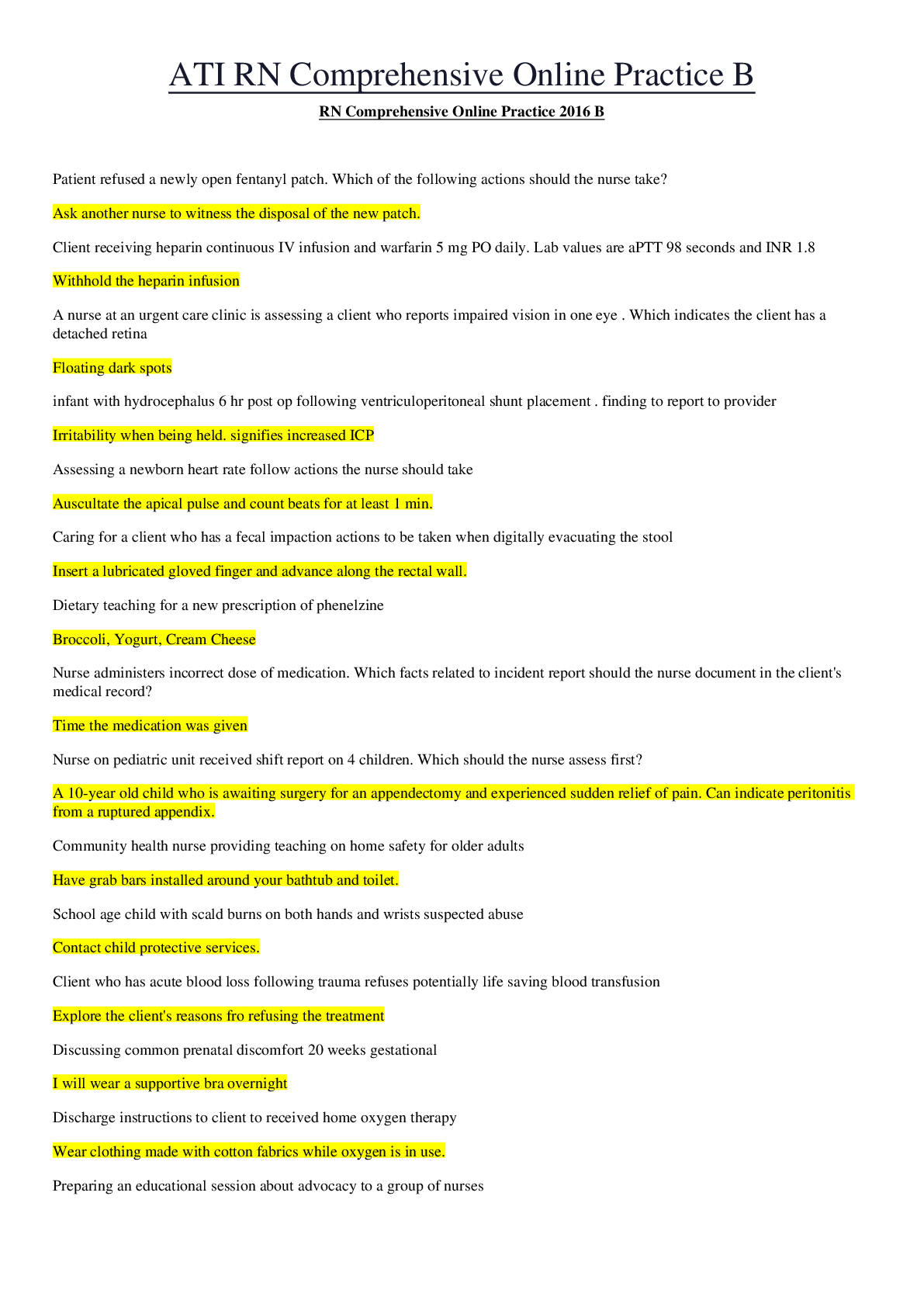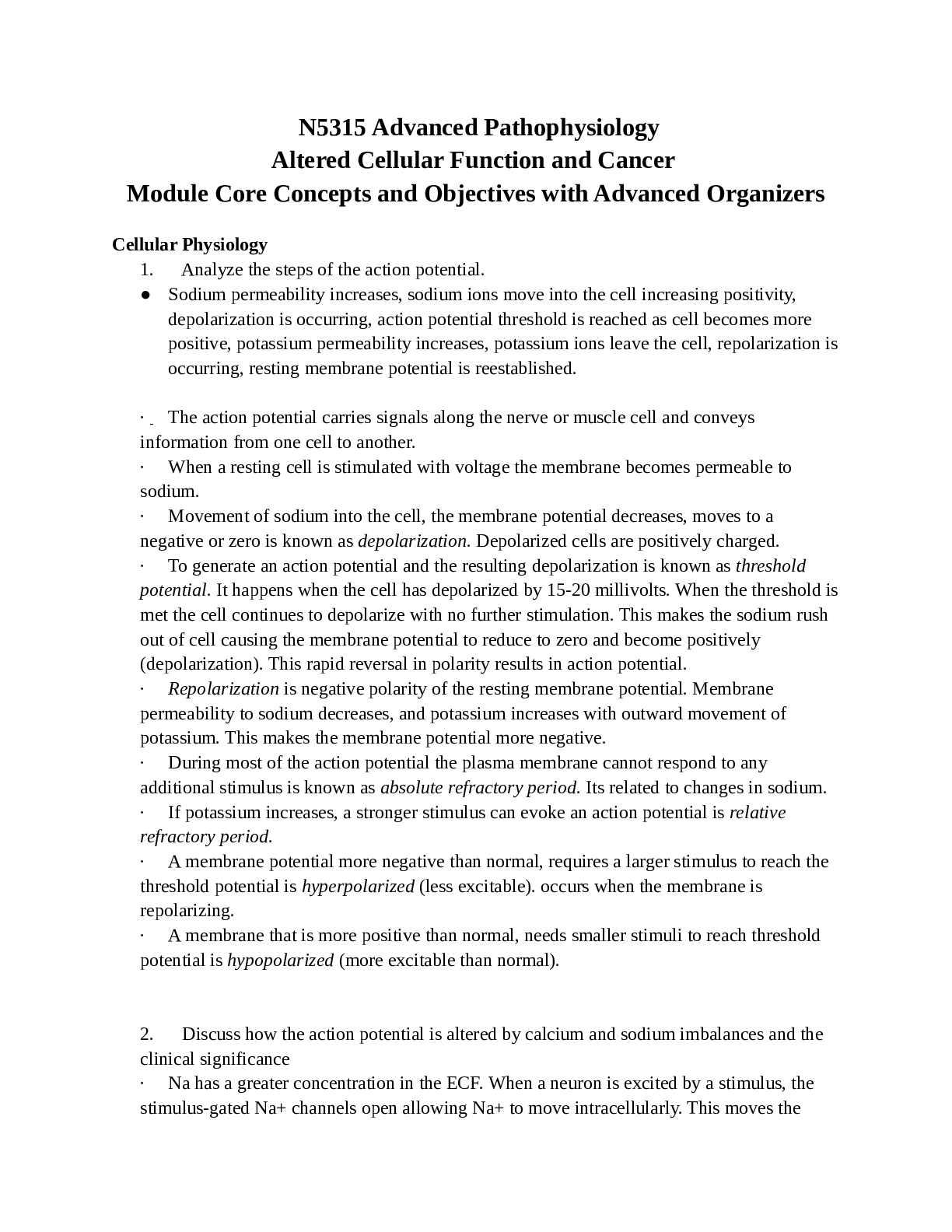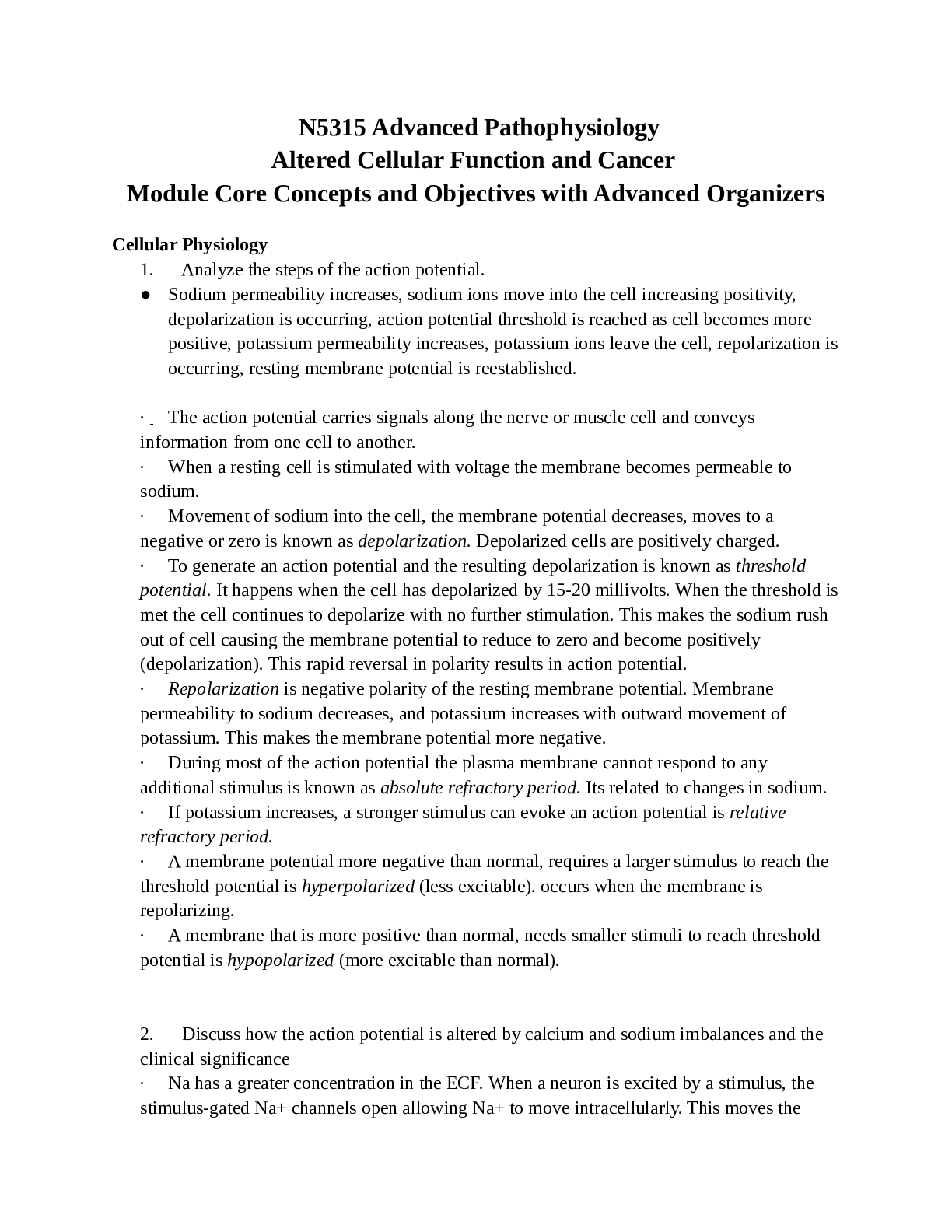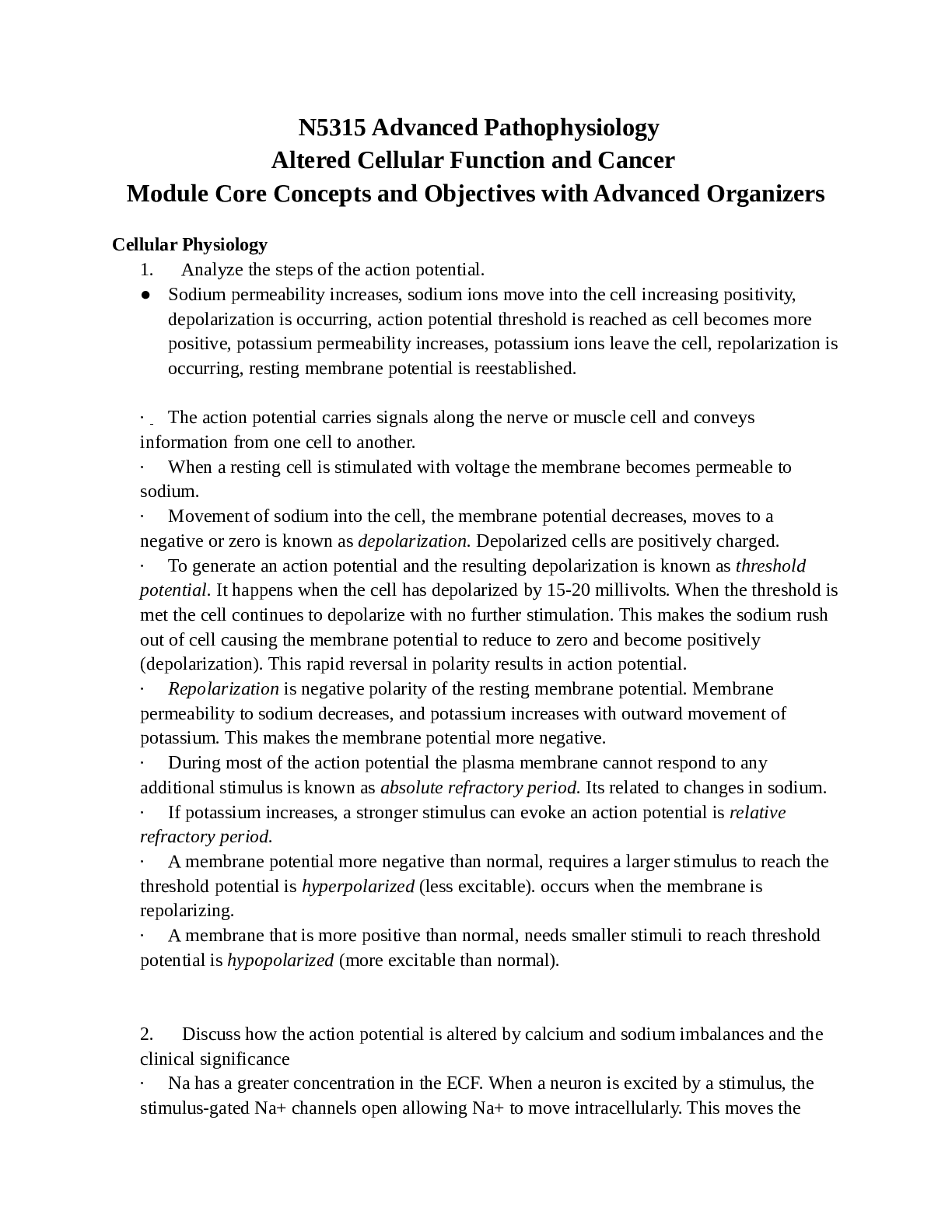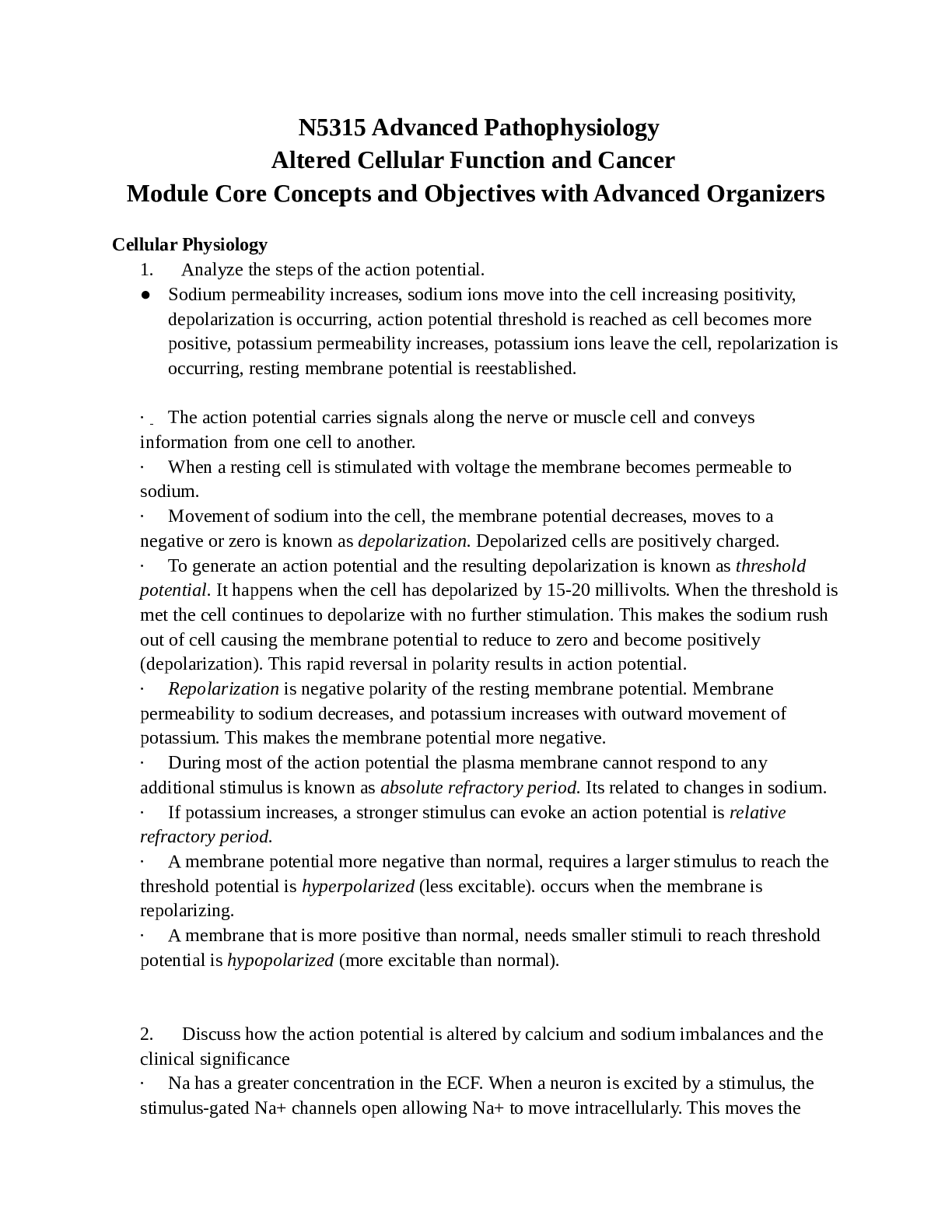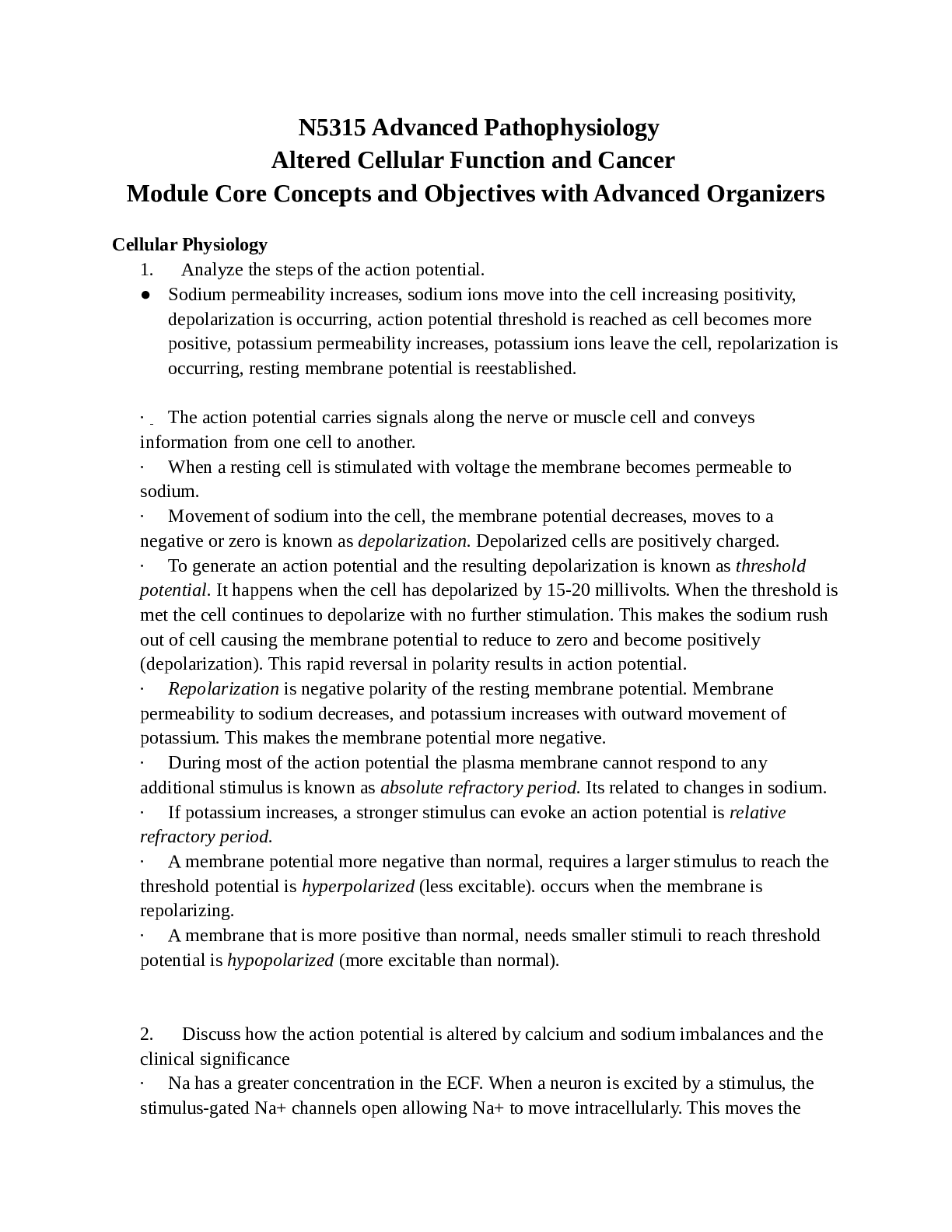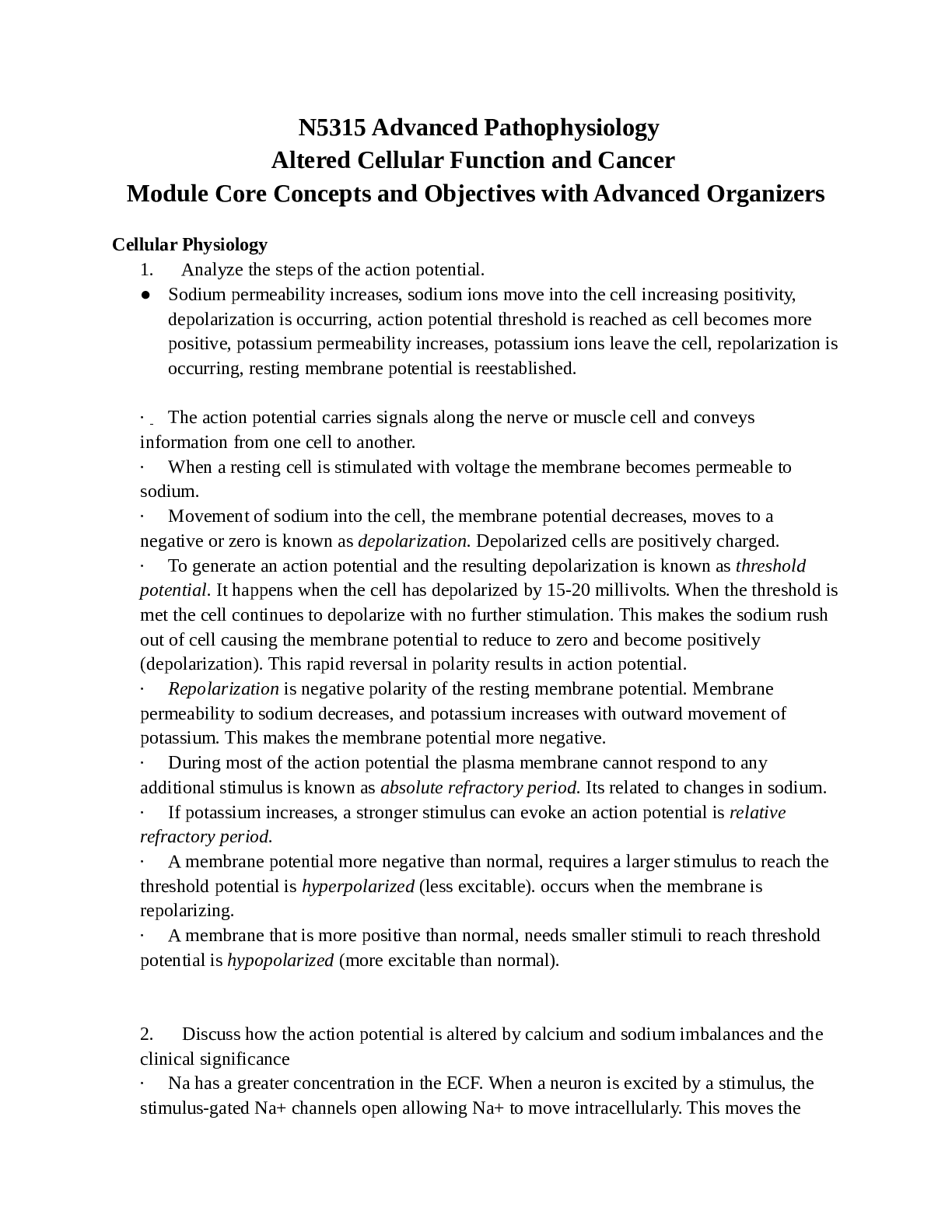Pathophysiology > EXAM > NURS 5315 Advanced Pathophysiology Altered Cellular Function and Cancer | Module Objectives with Ad (All)
NURS 5315 Advanced Pathophysiology Altered Cellular Function and Cancer | Module Objectives with Advanced Organizers
Document Content and Description Below
NURS 5315 Advanced Pathophysiology Altered Cellular Function and Cancer Module Objectives with Advanced Organizers Cellular Adaptation Patterns 1. Analyze the differences between cellular ad... aptation patterns. a. Differentiate between the etiology and the pathophysiology of atrophy, hypertrophy, hyperplasia, dysplasia, and metaplasia and identify an example of each. Disease Etiology (cause by) Pathophysiology (causes) Example Atrophy An increase in catabolismos the intracellular organelles that causes a reduction of the structural components of the cell such as less mitochondria, myofilaments, and endoplasmic reticulum. Physiologic atrophy occurs with early development Pathologic atrophy occurs due to decrease in workload, blood supply, nutrition, hormonal stimulation, and nerve stimulation Physiologic=thymus gland shrinks during childhood Pathologic=skeleton muscle atrophy Hypertrophy It is caused by hormonal stimulation or increased functional demand, which increases the cellular protein in the plasma membrane, endoplasmic reticulum, myofilaments, and mitochondria (not cellular fluid) Cardiomegaly, removing a kidney the other enlarges Hyperplasia (only cells that can undergo mitosis) Phy=Increase rate of cellular division Path= can be caused by increased hormonal stimulation Phy=An increase in tissue mass after damage or partil resection. Path=Response to an injury if the injury has been severe or prolonged Liver regenerating, callus, uterus enlargement during pregnancy Dysplasia Due to persistent, severe cell injury or irritation Disordered cell growth. Epithelial tissue of the cervix and respiratory tract Metaplasia Cell exposed to chronic stressors, injury or irritation A stimulus induces a reprogramming of stem cells. The stem cell differentiates along a new cellular pathway. Barrett Esophagus b. Identify a physiologic and pathophysiologic example for atrophy, - -- -- - - - - - - - - - - - - - - - - - - - - - - - - - - - - - - -promote digestion of connective tissue capsules and other structural barriers by secreted proteases; changes in cell-to-cell adhesion, often by changes in the expression of cell adhesion molecules such as cadherins and integrins, making the cancer cell more slippery and mobile; and increased motility of individual tumor cells. The mechanism of capsular dissolution is unclear. To transition from local to distant metastasis, thecancer cell must also be able to invade local blood and lymphatic vessels, a task facilitated by stimulation of neoangiogenesis and lymphangiogenesis by factors such as VEGF. Finally, a successful metastatic cell must be able to survive in the circulation, attach in an appropriate new environment, and multiply to produce an entire new tumor. e. Explain the TNM staging system for cancers and describe its significance for clinical practice. Staging involves determining the size of the tumor, the degree to which it has locally invaded, and the extent to which it has spread (metastasized). (see figure 12-25, pg394) A four stage system is used, with carcinoma in situ regarded as a special case. Stage 1 = Cancer confirmed to the organ of origin Stage 2 = Cancer that is locally invasive Stage 3 =Cancer that has spread to regional structure, such as lymph nodes Stage 4 = Cancer that has spread to different sites, such as liver cancer spreading to lung or prostate CA spreading to bone. The World Health Organization’s TNM system: T = tumor spread T0 = Breast free of tumor T1 = Lesion <2 cm in size T2 = Lesion 2-5 cm T3 = Skin and/or chest wall involved by invasion N= Lymph Node involvement N0 = no axillary node involved N1 = mobile node involved N2 = Fixed nodes involved M= metastasis M0 = No metastasis M1 = demonstrable metastasis M2 = suspected metastasis The prognosis generally worsens with increase tumor size, lymph node involvement, and metastasis. Staging may alter the choice of therapy, with more aggressive therapy being delivered to more invasive diseases. [Show More]
Last updated: 2 years ago
Preview 1 out of 11 pages

Buy this document to get the full access instantly
Instant Download Access after purchase
Buy NowInstant download
We Accept:

Reviews( 0 )
$12.50
Can't find what you want? Try our AI powered Search
Document information
Connected school, study & course
About the document
Uploaded On
Jan 17, 2021
Number of pages
11
Written in
Additional information
This document has been written for:
Uploaded
Jan 17, 2021
Downloads
0
Views
74








 – University of the People.png)
